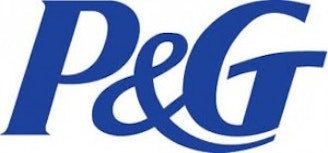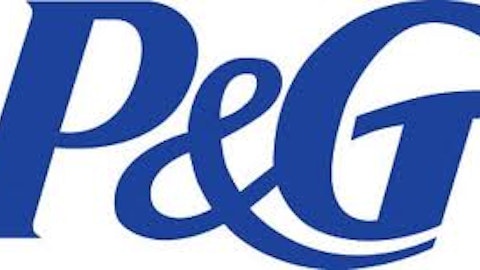Dividend stocks are everywhere, but many just downright stink. In some cases, the business model is in serious jeopardy, or the dividend itself isn’t sustainable. In others, the dividend is so low, it’s not even worth the paper your dividend check is printed on. A solid dividend strikes the right balance of growth, value, and sustainability.
Today, and one day each week for the rest of the year, we’re going to look at one dividend-paying company that you can put in your portfolio for the long term without too much concern. This isn’t to say that these stocks don’t share the same macro risks that other companies have, but they are a step above your common grade of dividend stock. Check out last week’s selection.

This week, we’ll turn our attention to a dominant name in personal-care products, The Procter & Gamble Company (NYSE:PG), and I’ll show you why this stock makes a strong case to be a staple in your income portfolio.
Trouble for personal care products?
What a difference a year makes for P&G! Last year the personal care-products company responsible for bringing you Tide laundry detergent, Crest toothpaste, Gillette razors, Pampers diapers, and dozens of other brand-name items struggled under not one, but two consecutive earnings warnings. P&G was weighed down by consumers’ tight spending habits that had them trading down to lesser-priced non-brand-name items. In addition, unfavorable currency exchange rates in Europe were lopping off significant chunks of profit when converted back into dollars. P&G actually had quite a few Wall Street analysts questioning whether its glory days were now gone.
But I knew better, and so did many investors who saw P&G hardly budge following each warning.
For starters, P&G’s problems weren’t solely related to P&G — they were sectorwide. Church & Dwight Co., Inc. (NYSE:CHD), for instance, operates globally and was forced to lower its forecast last year after consumers began buying larger amounts of lower-margin items, and following a pricing war with P&G in the laundry detergent aisle. Kimberly Clark Corp (NYSE:KMB) , the maker of Huggies diapers and Kleenex tissues, struggled as well with foreign currency translation, having $55 million in full-year profits evaporate because of an unfavorable exchange rate. The point is this was a sectorwide struggle, not just a P&G problem.
The P&G advantage
Whereas some view P&G’s glass as half empty, P&G ran with this weakness as an opportunity to regain market share and further fortify its brand image. Over the past couple of quarters, it’s done this through a number of key initiatives.
As I referenced earlier, in some cases it involved a short-term price drop to lure previous customers back to the brand. There’s a certain sense of Americana associated with Tide detergent that a small price cut certainly helps to sell. Cost-cutting on the job front also helps. P&G is reducing a grand total of 5,700 jobs worldwide and cutting back on excess domestic expenses while, at the same time, also boosting its headcount in overseas markets where growth rates are often in the double digits. Divesting has been yet another source of profits for P&G. By ridding itself of non-core assets — like selling the Pringles chip brand to Kellogg Company (NYSE:K) for $2.7 billion — P&G is free to focus its efforts (and its boatload of cash) on various growth initiatives.
Perhaps one of the greatest advantages that P&G can claim — and the true reason its share price didn’t collapse despite two profit warnings in 2012 — is the price inelasticity and intangible brand value associated with the dozens of personal-care products it sells. Household goods like detergent, toilet paper, and toothpaste aren’t exactly optional items. Regardless of the state of the economy, consumers are going to be purchasing these items without fail, which gives P&G incredible pricing power and incredible cash-flow predictability.
It also doesn’t hurt that many of its products are easily recognizable and practically a part of American culture.

Source: Scott Ehardt.
Tide and Crest, for example, are names that everyone from 8 to 80 years old would probably be able to associate as an American staple of detergents and toothpaste.
Putting all of these initiatives together, in P&G’s most recent quarter we saw marked improvement with diluted EPS growing 144% over the year-ago period and organic sales growth of 3%. Gross margin also jumped 80 basis points on a mixture of higher prices and lower manufacturing costs.
Buybacks, dividends, and a 123-year payout streak? Oh, my!
The Procter & Gamble Company (NYSE:PG)’s consistent success in the supermarket aisles has also translated into big wins for shareholders, and not just from a share-price appreciation perspective. The Procter & Gamble Company (NYSE:PG) has been a big proponent throughout the years of increasing shareholder value and returning cash to shareholders through share repurchases and increasing its annual dividend. Early last year, The Procter & Gamble Company (NYSE:PG) announced a $4 billion share-repurchase program and, in November, upped that to a range as high as $6 billion. While share repurchases don’t put money directly in shareholders’ pockets, they do make the company appear cheaper with fewer shares outstanding to compare total profits against.
This big allure of a consumer-products giant like The Procter & Gamble Company (NYSE:PG) is its dividend. The Procter & Gamble Company (NYSE:PG) has been paying a dividend for 123 consecutive years and holds the fifth-longest active annual dividend raising streak at a whopping 56 years! That’s right; P&G has raised its dividend every year since 1957.
Source: Nasdaq.com.
If you think about it, that’s even six more years than health-care conglomerate Johnson & Johnson (NYSE:JNJ) , which also sells personal-care products such as Band-Aids and shampoo, in addition to medical devices and brand-name drugs, and has a 50-year streak of increasing its dividends. J&J has been paying uninterrupted dividends since 1944, whereas P&G has been dishing out cash to shareholders without fail since 1891! Furthermore, P&G’s payout ratio is just 50%, leaving plenty of room for further dividend increases and creating a strong sense of payout sustainability.
Foolish roundup
For the conservative investor looking for a nice mix of dividend income and capital conservation, P&G is nearly the perfect stock consideration for your portfolio. P&G’s products have consistent demand and inelastic prices, which easily allow the company to keep up with inflationary input costs. It also is working on boosting sales in emerging markets while keeping a tight lid on domestic costs. With a multibillion-dollar share-repurchase program in place and a dividend yielding 2.8%, this is a dividend payer you can certainly count on.
The article 1 Great Dividend You Can Buy Right Now originally appeared on Fool.com.
Fool contributor Sean Williams has no material interest in any companies mentioned in this article. You can follow him on CAPS under the screen name TMFUltraLong, track every pick he makes under the screen name TrackUltraLong, and check him out on Twitter, where he goes by the handle @TMFUltraLong.The Motley Fool owns shares of Johnson & Johnson and recommends Johnson & Johnson, Kimberly-Clark, and Procter & Gamble.
Copyright © 1995 – 2013 The Motley Fool, LLC. All rights reserved. The Motley Fool has a disclosure policy.


